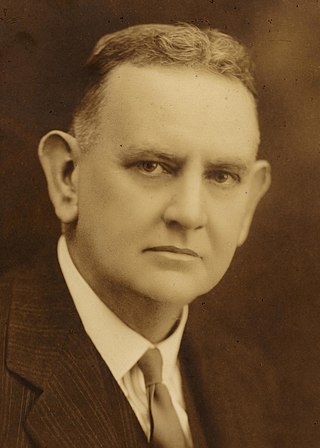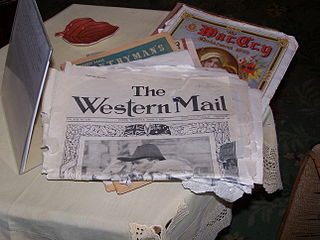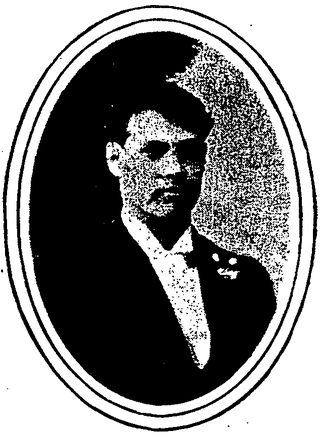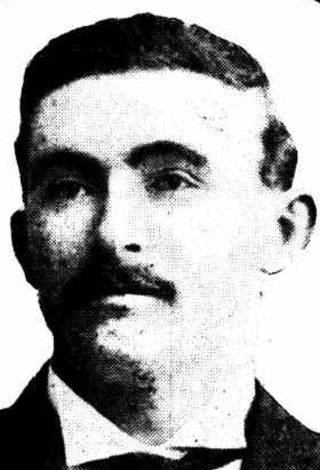
Sir Harry Pateshall Colebatch CMG was a long-serving and occasionally controversial figure in Western Australian politics. He was a member of the Western Australian Legislative Council for nearly 20 years, the twelfth Premier of Western Australia for a month in 1919, agent-general in London for five years, and a federal senator for four years.

Civil disturbances in Western Australia include race riots, prison riots, and religious conflicts – often Protestant versus Catholic groups.

The Western Mail, or Western Mail, was the name of two weekly newspapers published in Perth, Western Australia.

The network of railway lines in Western Australia associated with the timber and firewood industries is as old as the mainline railway system of the former Western Australian Government Railways system.

Reginald John Burchell was an Australian politician. He was a member of the Australian House of Representatives for the seat of Fremantle from 1913 to 1922, initially for the Australian Labor Party and after the 1916 Labor split for the Nationalist Party.
The Fremantle Football Club was an Australian rules football club based in Fremantle, Western Australia, that played in the Western Australian Football Association (WAFA) from 1886 to 1899. The club was known as the Union Football Club from 1882–89.

The 1919 Fremantle Wharf riot, also known as the Battle of the Barricades, arose out of a strike by stevedores in Fremantle, Western Australia in 1919. The strike was called by the Waterside Workers' Federation (WWF) over the use of National Waterside Workers Union (NWWU) workers to unload the quarantined ship Dimboola, and escalated into fatal violence when WWF workers and supporters attempted to prevent NWWU members from carrying out the work.
The Herald was a weekly trade union magazine published in Adelaide, South Australia between 1894 and March 1910; for the first four years titled The Weekly Herald. It was succeeded by The Daily Herald, which ran from 7 March 1910 to 16 June 1924.

Thomas Fox was an Australian politician, who was a Member of the Legislative Assembly of Western Australia from 1935 to 1951. Earlier, in 1902, Fox played with Australian rules football club Carlton in the Victorian Football League (VFL).

William Grills Knight was a prominent businessman and politician who served as the Mayor of Albany in the Great Southern region of Western Australia.

The Federal Hotel is located at 23-25 William Street in Fremantle, Western Australia, opposite the Fremantle Town Hall.

The Fremantle Trades Hall is a two-storey former trade union hall in Fremantle that was built during the gold boom period and completed in 1904. The building is located at the corner of Pakenham and Collie Streets in the west end conservation area of the city.

Scots Presbyterian Church is a Presbyterian church located at 90 South Terrace, on the corner of Parry Street, in Fremantle, Western Australia. It was the first Presbyterian Church built in Fremantle and one of only six to decline amalgamation with the Uniting Church.

The P&O Hotel is a heritage listed building located at 25 High Street on the corner of Mouat Street in Fremantle, Western Australia. It was one of many commercial buildings constructed in Fremantle during the gold boom period in the late nineteenth and early twentieth century.

East Street in a street located in Fremantle, Western Australia. It runs between High Street and Beach Street on the southern shore of the Swan River. The intersection with High Street is at the north east corner of the Monument Hill reserve. It also intersects with Ellen Street and Burt Street on its western side.
Captain George Andrew Duncan Forsyth was the fifth harbourmaster at the port of Fremantle (1874–1886) and the first chief harbourmaster for the Colony of Western Australia (1879–1886).
Jabez Edward Dodd was an Australian politician. He was a member of the Western Australian Legislative Council from 1910 until his death, representing South Province. He was elected as a member of the Australian Labor Party, but left the party in the 1917 Labor split and represented the Nationalist Party thereafter.














